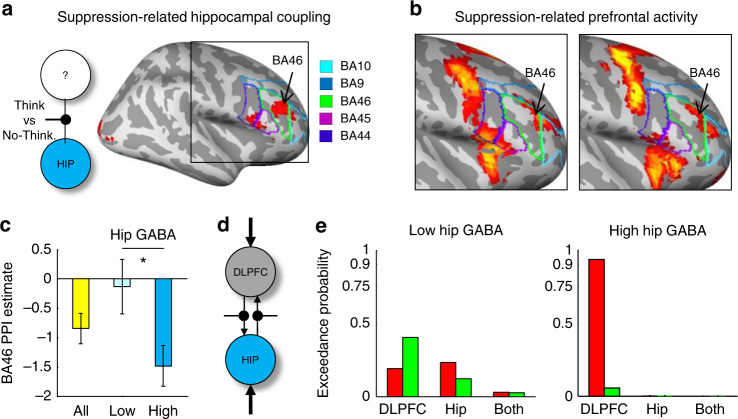Fig. 3.
Hippocampal GABA predicts DLPFC-Hippocampal connectivity during thought suppression. a Schematic of psychophysiological interaction analysis (PPI) with hippocampal (HIP) seed and conditions modulating HIP connectivity. Significant PPI effects arose in right lateral prefrontal cortex: Brodmann’s area (BA) 46/9 (DLPFC) and BA45 (VLPFC), displayed as colored boundaries (see legend). b DLPFC activity during suppression (No-Think > Think) in the current (left) and in a prior study31 (right) overlapped with the PPI effects. c Functional connectivity: Suppression negatively modulated fronto-hippocampal coupling (PPI estimate, y axis), with the strength of negative coupling differing between low- and high-GABA subgroups (Independent samples t-test, *p < 0.05). Error bars represent standard error of the mean. d The six bidirectional dynamic causal models of the DLPFC–HIP network varied according to two parameters: Which Task modulated connectivity (horizontal lines: No-Think or Think) and source of Driving Input (Outer arrows: DLPFC, HIP, or BOTH). e Effective connectivity: for Low GABA participants, no clear evidence for a role of DLPFC in modulating connectivity emerged in any model. For high hippocampal GABA participants, model evidence (exceedence probabilities) favored a model with inputs to DLPFC driving the network and the No-Think task modulating connectivity

